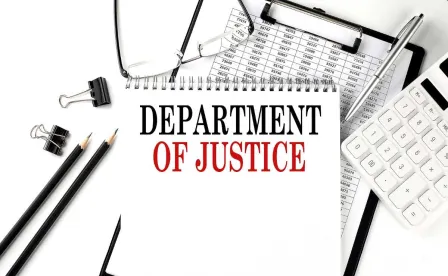Late last week, the U.S. Department of Justice Antitrust Division announced its withdrawal of a string of healthcare enforcement policy statements issued in 1993, 1996, and 2011. “The healthcare industry has changed a lot since 1993, and the withdrawal of that era’s out of date guidance is long overdue. The Antitrust Division will continue to work to ensure that its enforcement efforts reflect modern market realities,” said Assistant Attorney General, Jonathan Kanter in the press release announcing the decision. Kanter’s announcement also said that the withdrawn guidance would not be replaced and that more recent enforcement actions and competition advocacy in health care markets provide guidance to the public.
The DOJ’s action was informally announced the day before the press release in a speech by Doha Mekki, the Principal Deputy Assistant Attorney General. Ms. Mekki emphasized the information exchange passages from the withdrawn guidance as a particular focus of the Antitrust Division. The guidelines provided a “safety zone” (in effect a safe harbor) for information exchanges among competitors which (1) was managed by a third party, (2) the data was more than three months old, and (3) the information was anonymized and aggregated, with the data coming from at least five sources and with no one source of data constituting more than 25% of the total data. The Mekki speech indicated that each of the components of the safety zone had been undercut by technological developments.
Neither Mekki’s speech nor the Kanter press release mentioned any other aspect of the guidance as motivating the DOJ’s action. In our experience, the information exchange safety zone has been relied upon heavily by trade associations and consultants in numerous industries so we expect this aspect of DOJ’s action to have a wide impact.
Other aspects of the withdrawn guidance may not be as immediately felt by the health care industry. In particular, provider clinical integration activities may still rely on the FTC’s numerous advisory opinion letters (see examples here, here, and here), and group purchasing activities may still look to the Antitrust Guidelines for Collaborations Among Competitors.
The Mekki speech provided more insight into the Department of Justice’s thinking that led to its action. Ms. Mekki started with the two factors the Supreme Court recognized as appropriate screening mechanisms to identify anticompetitive information exchanges—“the structure of the industry involved and the nature of the information exchanged.” United States v. U.S. Gypsum Co., 438 U.S. 442, 441 n.16 (1978). She then suggested that improper information exchanges have been found in markets that were less concentrated and pointed to cases of exchanges among as many as 365 participants that were condemned. Ms. Mekki then pointed to cases involving aggregated data where the parties had the ability to disaggregate them, using then-Judge Sotomayor’s opinion in Todd v. Exxon Corp., 275 F.3d 191 (2d Cir. 2001).
Ms. Mekki questioned whether with modern technologies, the five participants and the data being three month old components were sufficient to protect against anticompetitive information exchanges. She pointed to “high-speed, complex algorithms that can ingest massive quantities of ‘state,’ ‘aggregated’ data from buyers and sellers to glean insights into the strategies” of the competitors.
Ms. Mekki made clear that DOJ’s motivation here was not limited to health care markets:
Over the nearly 30 years during which those statements have been in effect, we have learned that concerning anticompetitive conduct can nonetheless satisfy many if not all of the safety zones’ factors. We have seen the safety zones be misinterpreted. Sometimes they are misapplied to other contexts or industries that were never contemplated by the guidance. Moreover, markets have evolved well beyond the context in which the safety zones, and some of the guidance more broadly, were articulated.
Missing from the document formally withdrawing the Guidelines and from Ms. Mekki’s speech was any acknowledgement that many, if not most, information exchanges are benign competitively or serve useful purposes. Until such time as the antitrust agencies give new, up-to-date guidance, companies who participate in information exchanges and entities, for example trade associations, and those who administer them should take a fresh look at their purpose and details, recognizing that every such exchange is now potentially “fair game” for the enforcers.
Mintz is monitoring the developments, in particular to see if the FTC follows suit and withdraws its support for the health care guidelines (which would require a Commission vote).






 />i
/>i

